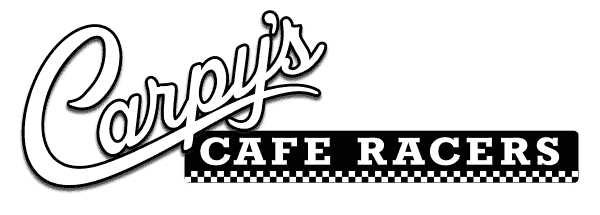Many people email or call and some have the same problems, so I thought I might do a wee bit of a blog and show you what we do when you grab an old CB750 and fnd out that the front brake sticks and wont release, how can you over come this and get the […]
-
-
- Home
- Meet Carpy
- Carpy’s Café Racers
- The Hot Tamale / HTML – Honda CB750
- The Rice Boiler – Honda CB750
- Tenacious Ton – Honda CB750
- Seoul Motion – Honda CB750
- Russ Collins Special – Honda CB1000
- The Lunsford – Honda CB750
- The Nut Basher – Honda CB750
- The Cosmic Cafe – Honda CB750
- The Cosmic Cafe – Honda CB750
- The Speedmaster – Honda CB750
- G.C.R. – Honda CB750
- The Revolver – Honda CB750
- The Cyclone – Honda CB750
- Shop Our Store
- Reader’s Rides
- Blog
-
-
